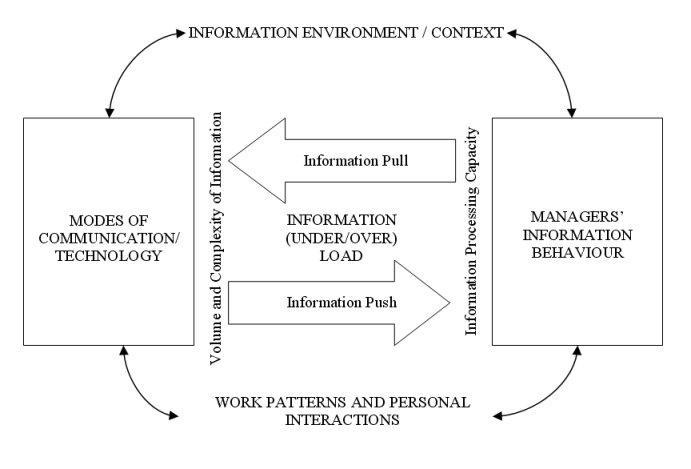Role of Communication in Indian Corporate Culture
KEY WORDS: Communication, Culture, Corporate, Indian
A Research Article on
"Role of Communication in Indian Corporate Culture"
ABSTRACT:
Culture is one entity that adds to the organization as a whole. However, more than any other organisational factors, the culture of the organisation respond to the members’ basic needs. The culture of the organisation reflects a vision shared by the members at large. Many researchers have been done to study organizational culture but not much effort has been done to relate it with the communication skill. Consequently, an effort has been made in this paper to assess and describe characteristics of organizational culture.
The large organisations in India are found to have high differentiation in the organisational policies, practices and work culture. The objective of this study is to explore the importance of communication in organisational culture prevailing in Indian. It is most relevant to the analysis and evaluation of communication in the context of organizational culture in major Indian corporate and changes leaders can employ to improve organizational performance through communication strategies.
KEY WORDS: Communication, Culture, Corporate, Indian
INTRODUCTION:
It is the need of the hour to understand and take interest in cultural complexities because of the proliferation of international business activity. Today, employees are influenced by membership in numerous “cultures” based on elements such as ethnic or national origin, religion, gender, geographic region, age (Gollnick & Chin, 1990), and organizational membership.
Communication is an unavoidable factor and effective communication can be of utmost importance for management to deal with the individual employee reactions to the merger, and the anxiety and stress levels following a merger. According to Ivancevich, Schweiger and Power (1987) the aspects of communication should be expected to focus on employees’ concern like layoffs, changes in work rules, compensation, and pension etc.
Culture is a concept borrowed from the field of Anthropology. Sociologists, Anthropologists and Behavioural scientists have extensively used the term culture. However, the concept of organizational culture is different from sociological concept of culture. Social culture is the mean to an end, the end being the holistic development of one’s own personality and one’s own society. Schein, (1990) states that culture is what a group learns over a period of time; what it tries to solve its problems of survival in an external environment, and its problems of internal integration.
ORGANISATION AS A SYSTEM OF COMMUNICATION:
Organizational culture collectively arises from the socialization of everyone in an organization through their understanding of company expectations. It results from the cumulative learning of a group of people and evolves through company rituals, work practices and dialogue. Once an employee joins a particular organization, impressions of the working and social environment are communicated during activities like new employee orientation. Training sessions and methods, organizational hierarchy and interaction of employees with each other and their superiors also helps in the development of organizational culture.

Organizational communication includes the verbal and non verbal communication that is used to influence the working environment in an organization. Two forms of organizational communication that contribute to organizational culture are surveillance and ethical communication. Surveillance and ethical communication impact organizational culture as they shape employee behavior and their perception of the value the organization places on them.
THE ROLE OF ETHICAL COMMUNICATION IN THE CULTURE OF AN ORGANIZATION:
Ethical communication deals with how open management is with the employees. Ethical communication involves passing on accurate information in a timely and ethical way. The communication methods used by an organization can be harnessed to instill trust in the organization. Ethical communication cultivates organizational loyalty when organizations recognize the value of the employees and respect them as contributors to the success of the organization.
Employees’ accessibility to information that is critical for their performance at work influences their level of willingness to give back equally. In an organization where there is discord between what employees are told, and what they see from management, a culture of friction and distrust arises within the organizations. When employees feel like they hear one thing and see another, they get the impression that management is putting up a front. Communication then becomes superficial at all levels, as employees begin to mirror this kind of unethical communication with peers and their superiors. Organizations can ensure they maintain ethical communication by having a company code of ethics and ensuring management follows through on their promises and commitments and expects the same of employees at all levels.
CORPORATE COMMUNICATION IN SELECT INDIAN COMPANIES; A CASE STUDY:
Infosys tried to preserve the attributes of a small company even with the expanding base and worked in small groups; Managers played the role of mentors and used their experience to guide their team members. Infosys was one of the first companies to offer scope to its employees compensation depended on the performance of individual, the team and the company Challenges faced by the company to retain its talented workforce.
Leadership at different levels of the organization in Tata display strong commitment to ethics through communication and adoption of role model stature. In order to ensure ethical business practices in an organization, it is important to have an ethical orientation among the people who own, manage, and work for it. At Tata, this has been achieved by adopting proper structures, policies, and practices as they influence the ethical behaviour through flow of communication and reinforcements of ethical choices.
Bharti being an Indian company and many of their vendors are multinational companies there will be many culture differences for Bharti employees to deal with. Not only in the way business is handled but with company’s norms, communication barriers, and best practices. In aligning Knowledge Management with strategic goals, it became part of Bharti’s culture. That said, there are always people who will question the value of Knowledge Management. Given this, regular, focused communications and visible senior-management support remain invaluable.
The State Bank of India had to face a dramatic cultural change with the challenges thrown by the private sector banks which provided customer oriented services while most of the staff in SBI was not aware of the fact that the bank was losing its hold amongst the upper end market. According to survey report “the top two obstacles encountered by bank during the major organizational changes are communication breakdown and employee’s resistance.”Biggest challenge for the management was to convey its idea of transformation to each and every employee of the organization. Communication is the key to SBIs success as it is able to link numerous branches across the globe.
Reliance Industries Ltd. eensure institution of standardised channels of internal communications across the Company to facilitate a high level of disciplined participation.Reliance Knowledge Management System (KMS) was built to be the common intranet system for Reliance Industries Ltd., allowing users to share news, photos, videos and more.
Here are examples where corporate culture is mostly distinct from the culture of any nationality. For example if two employees, one Indian and one Chinese working in the company of Motorola communicate with each other, the neo culture in which they operate has nothing to do with either Indian or with the Chinese culture. It is rather the Motorola culture which shapes their messages. Thus, this transactional culture is that corporate culture which stands unadulterated by localized cultural influences. The studies of intercultural business communication should be directed towards helping the students attain this kind of culture.
CONCLUSION:
For successful entry and continuous growth in a foreign market, effective communication with the unfamiliar partner and adaptation to the culture is important. A free flow of communication is essential for any organization to realize its objective. In which direction (top-down, bottom-up or horizontal) does communication flow is mostly culturally determined. In India, there is general dependence on those who hold power and Indians need plenty of communication and directions from the top for the completion of their job.
Looking at the most of the Indian corporations, it is observed that communication tends to be more top-downwards than bottom-upwards. Due to a tendency to centralize authority and decision making at the top of the organization, horizontal communication (or co-ordination) is considered difficult to achieve.
Because of low level of delegation, too much information flow is assumed as not required; not to mention that the feeling of distrust encourages information-hoarding. Hence, information is clearly perceived as power by superiors, and is distributed carefully and selectively. This may be attributed to the high power distance, where communication tends to be less open and more indirect. In India, involving an intermediary is imperative for all cases that could lead to a clash between people and thus to a loss of face. Examples are a critical appraisal of a subordinate or a counterpart or the resolution of a conflict of interest within the organization. In dealing with the outside world, intermediaries are used even more frequently.
REFERENCES:
- Chatterjee, Debojyoti (2002), “The Great SBI Makeover,” Business Today, August 4p.56
- Eisenberg M. Eric, Goodall H.L. Jr, and Threthewey Angela. Organizational Communication: Balancing Creativity and Constraint. 6th ed. Boston: Bedford/St. Martin’s, 2010
- Guha, Krishna(1998), “State Bank of India Faces a Bumpy Ride,” Financial Times, January 14, p. 38
- Griffith DA, Harvey MG (2002). Developing Effective Intercultural Relationships: The Importance of Communication Strategies, Thunderbird Int. Bus. Rev., 44(4): 455-476.
- Maheshwari Sunil Kumar and Ganesh M P, Ethics in Organizations: The Case of Tata Steel, Vikalpa, 2006 Apr-Jun, pp 75-88
- Masood & Benson, ‘Organizational change management and global sourcing – a winning cmbination’ a viewpoint on Infosys published in Building Tomorrow’s Enterprise, 2011

